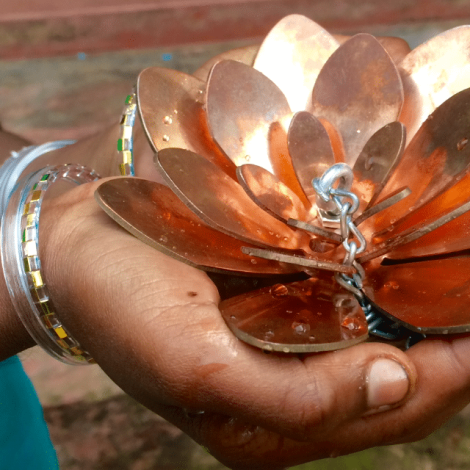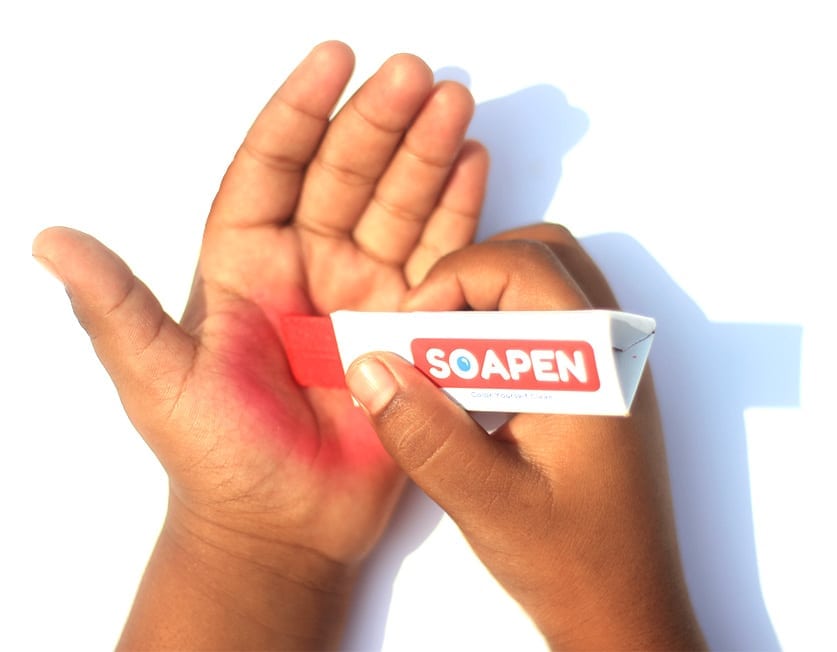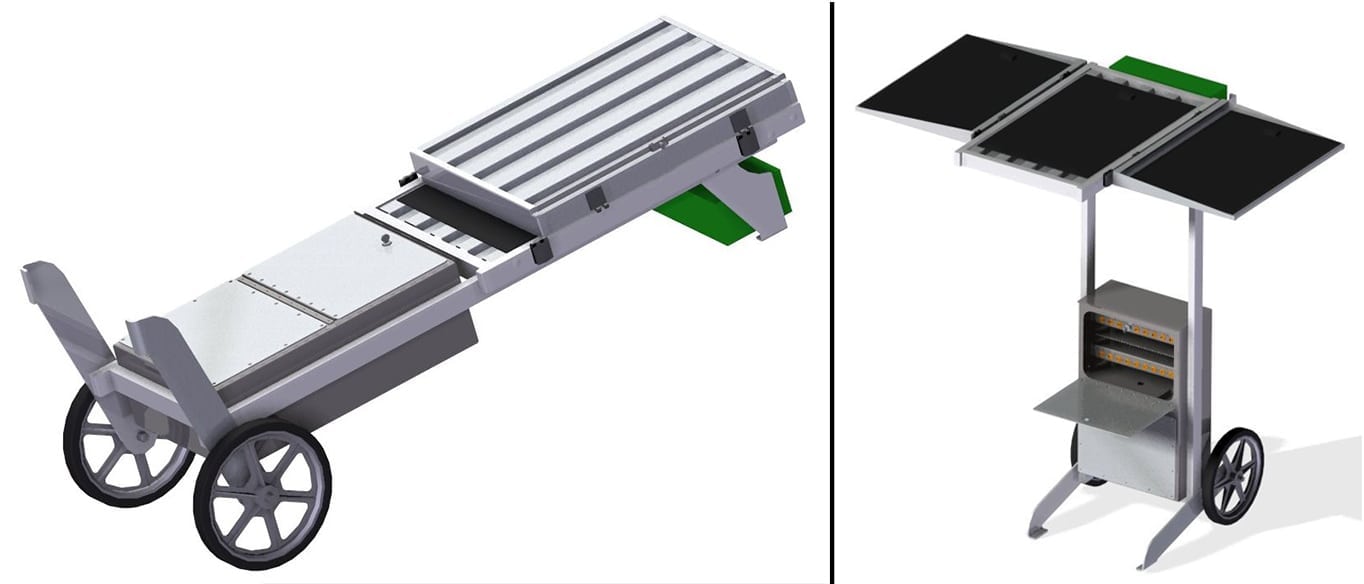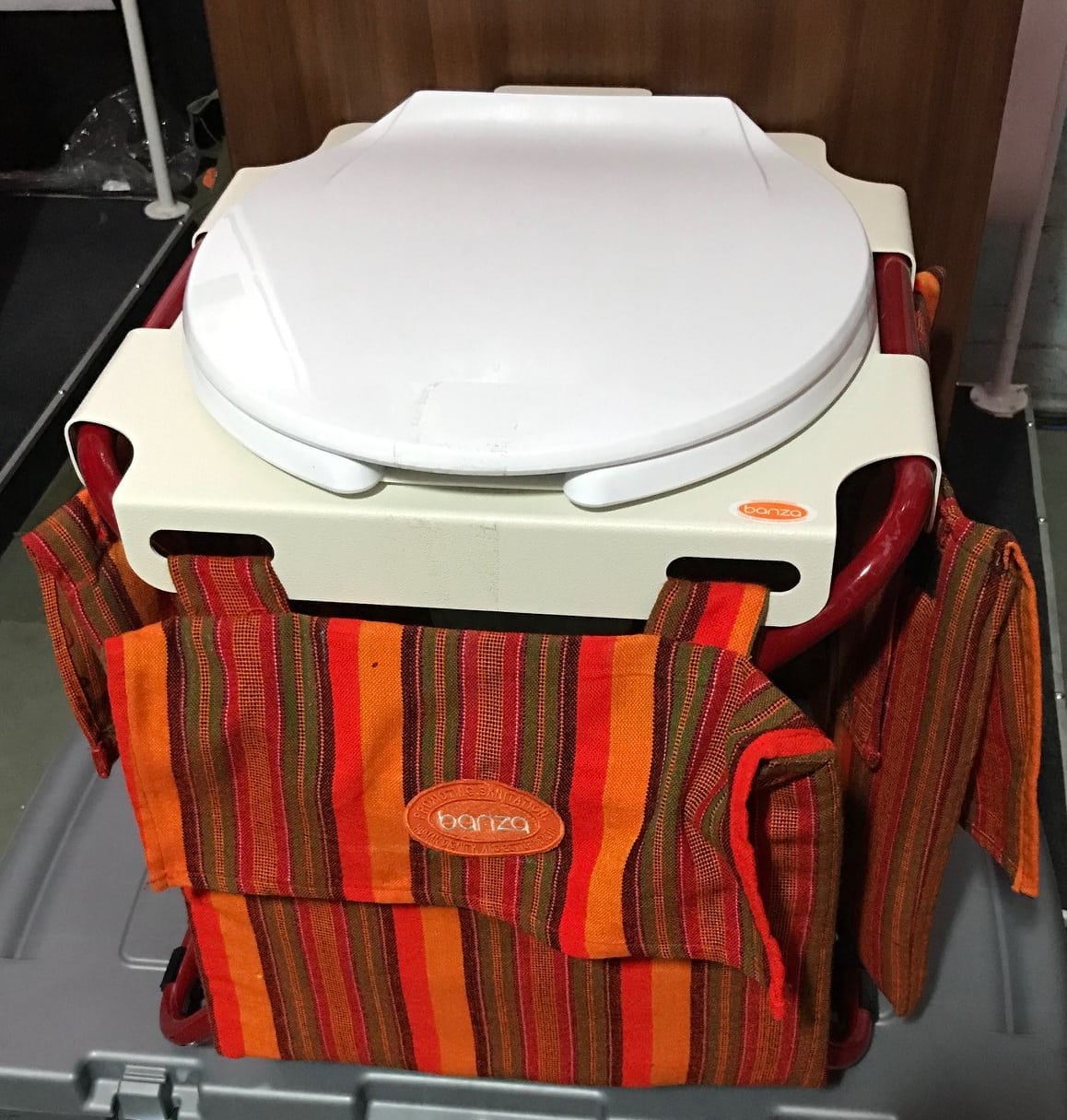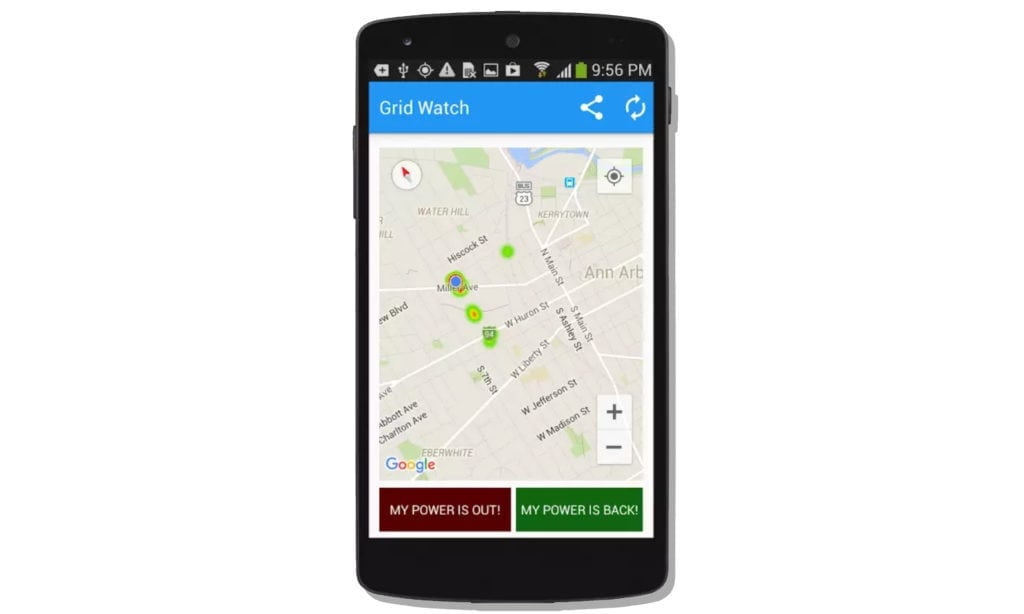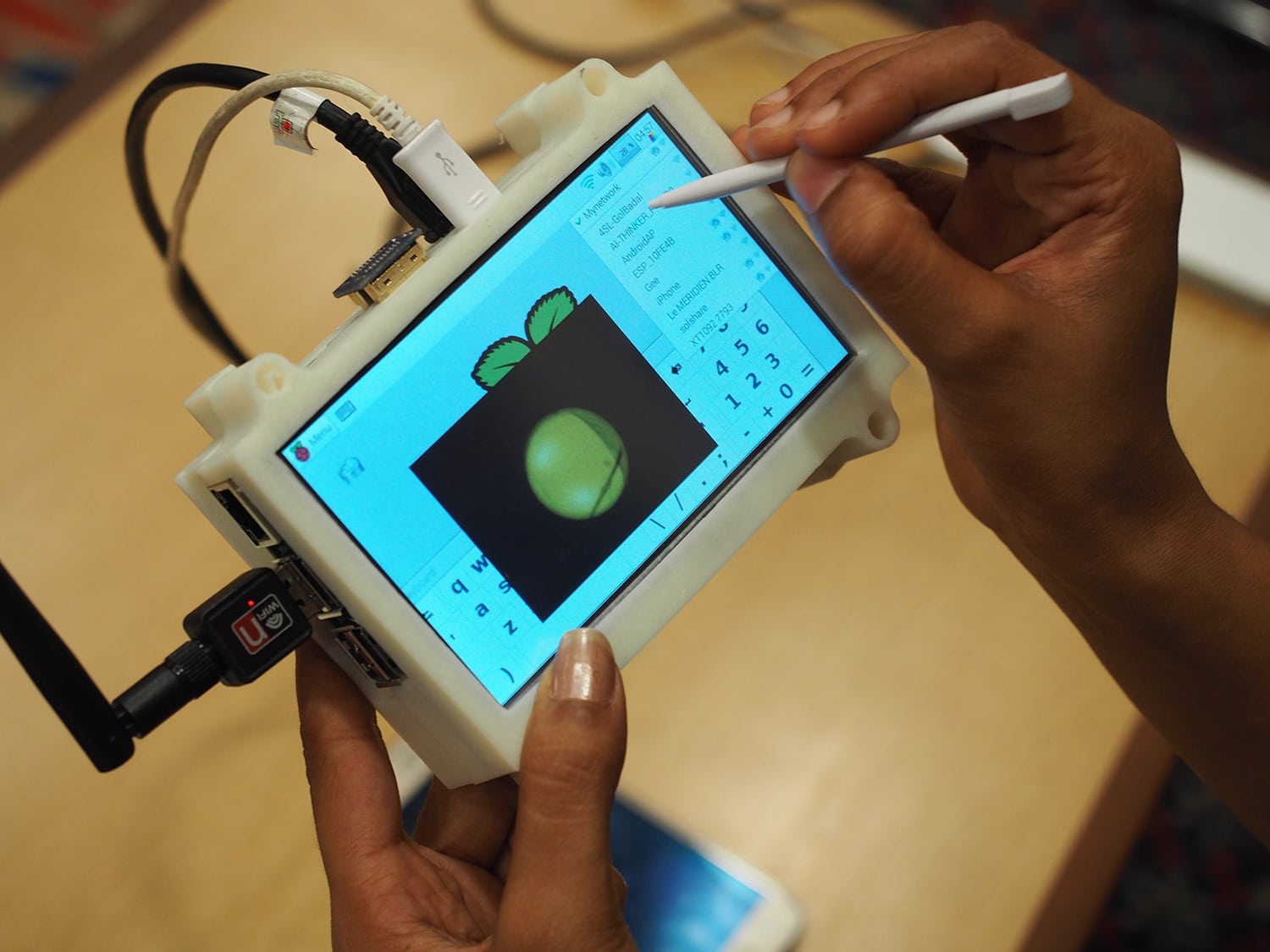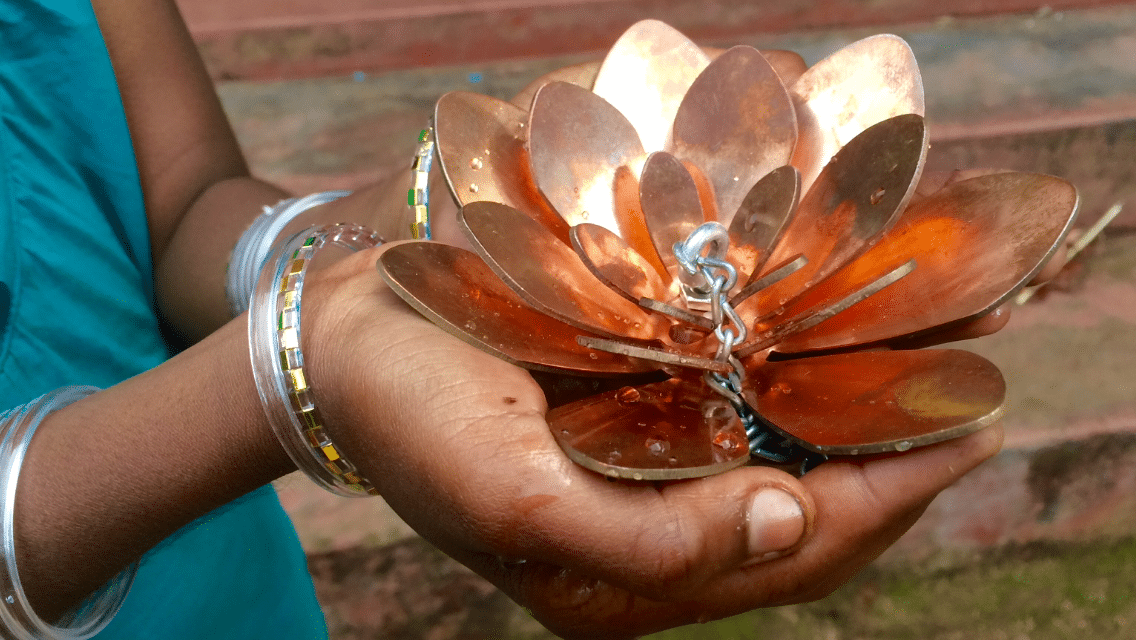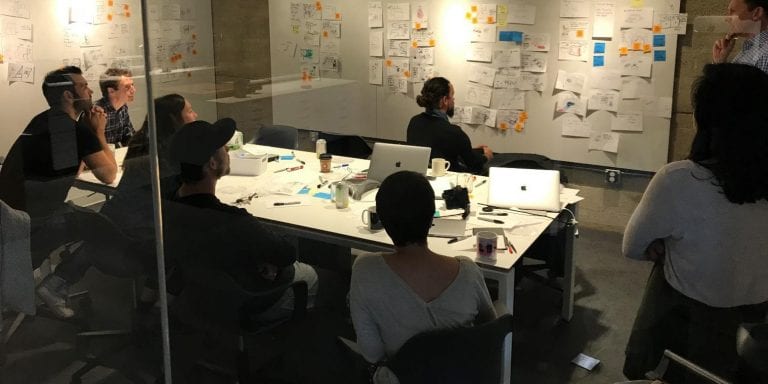Prototypes are pushing the field of global development technology forward as they evolve in workshops, universities, laboratories and even garages. We asked our international network of experts in engineering for global development to recommend the innovations that they believe we should keep an eye on. This is a look at some of the newest hardware, software and services in development now. Each is designed to meet a basic need in the world’s underserved communities. And each has the potential to become a marketable product that can improve the quality of life. These are promising prototypes to watch in the year ahead.
SoaPen colored soaps for school children
SoaPen has found a way to make handwashing interesting to children. The startup is developing colored bar and liquid soaps that act as paints or pens for drawing on children’s hands. The children then scrub the colored soap off in the sink, ending up with clean hands as a by-product of a fun activity.
“We have several working prototypes of the bar and liquid soaps in different colors and fragrances. At factory scale, we have got successful results from only the orange liquid SoaPen as of now. We are still working towards perfecting the bar soap,” Shubham Issar at SoaPen says.
The soap addresses a serious problem among children in developing countries. Diarrhea is one of the biggest killers of children under the age of five worldwide, and handwashing, together with clean drinking water, is key to reducing the spread of the disease. In five years, the SoaPen team would like to reduce diarrhea rates by at least half in the schools where the product will be distributed. Ms. Issar says.
So far, the startup has conducted trials in three schools in Mumbai, India, with positive results, Ms. Issar says. Now they are trying to figure out the best place to store the SoaPen in the classroom.
The team is outlining their business model and marketing strategy while product development is still underway. The plan is a “buy-one-give-one” strategy for sales, and they would like to partner with companies that already distribute soaps to the schools they plan to target. The cost of each SoaPen is not yet determined.
“Hoping to have SoaPens on the shelf early this year!” Ms. Issar says.
SoaPen online: www.soapen.com
Introductory video: SoaPen
And in E4C’s Solutions Library: SoaPen
Zipline blood delivery drones
Unmanned aerial drones deliver blood on-demand to transfusing facilities in rural western Rwanda. The drones, developed by the California-based robotics company Zipline, are part of a new Rwandan governmental program that plans to make 50—150 deliveries each day to 21 facilities.
Postpartum hemorrhaging is the leading cause of death for pregnant women in Rwanda. Blood transfusions can help. But blood is difficult to deliver along the country’s roads. The blood requires expensive temperature-controlled transport, and the roads can wash out in the rainy season.
“We’ve built an instant delivery system for the world, allowing medicine to be delivered on-demand and at low-cost, anywhere,” Zipline CEO Keller Rinaudo said in a statement.
The drones, called Zips, can carry 1.5kg of cargo and fly up to 150km, even in wind and rain. The drones take off and land from the same facility and make their deliveries with an air drop. The transfusion centers place an order for blood by cellphone or text message, and the drones drop it off within 30 minutes.
Zipline has partnered with UPS and Gavi, the Vaccine Alliance, and the company received at $1.1 million grant from the UPS Foundation.
Zipline online: flyzipline.com
And in E4C’s Solutions Library: Zipline Drone Medical Delivery Service
Chameleon color-changing soil sensors
The Chameleon Field Reader and Sensor kit changes colors to reveal information about garden and farm soil. The starter kit and other devices in the system, now in beta testing, measure moisture, salt and nitrates in the soil. Users can upload their soil data to the Virtual Irrigation Academy Web site where they can track changes throughout the year. The site compiles data from farmers around the world to create a snapshot of soil conditions and changes over time.
Applications for the sensors include insight into when to irrigate to avoid water stress, water-logging and fertilizer leaching, and how to improve the usefulness of rainfall.
Now in prototype, the starter kit costs $210. That price is expected to drop after the product is commercialized. People can join the beta test now and enter data on the site.
See Chameleon online: viashop.csiro.au
And in our Solutions Library: Chameleon Soil Moisture Sensor
African Renewable Energy Distributor (ARED)
When ARED launches in Rwanda, it will provide a “business in a box” micro franchise based on a solar-power-generating kiosk. The kios, called Shiriki Hub, can charge mobile phones, provide virtual top-up service to buy mobile air time, prepaid utilities, pay taxes and other bills. The kiosks also deliver Internet and local digital content via intranet. Multiple hubs connect wirelessly to create a network managed by each entrepreneurial business owner.
Kiosks can charge up to 30 phones simultaneously and provide Wi-Fi Internet to up to 50 users. The kiosks are outfitted with sensors and GPS that allow the business owner to remotely monitor their performance.
ARED intends to provide support and training to a network of owners, technicians and other personnel affiliated with the business. The plan is to employ a micro-franchise business model in which operators lease the kiosks for a one-time fee, then share revenue generated with ARED.
“The value is not on the kiosk but on the services the kiosk provides,” says Henri Nyakarundi at ARED.
The product is in the final stage of development as the team awaits a new prototype delivery from the manufacturer, Mr. Nyakarundi says. The latest changes include a kiosk that is easier to transport, more durable, and a Wi-Fi platform that “will be a game changer,” Mr. Nyakarundi says. The platform will deliver digital content at no cost to the user.
Most of the components will be sourced locally with the exception of the electronics and solar panel.
The launch in Rwanda is planned for February 2 with a live video streak on Facebook. A launch in Uganda is planned for June.
ARED online: a-r-e-d.com
Introductry video: ARED
Banza Portable Toilet
Plumbing is scarce in the rural communities and urban slums of many developing countries. And because of that, so are toilets. Waterless latrine designs work well in certain circumstances, but a common problem is what to do when they are full. Banza Toilet’s solution is a system that allows for easy disposal of waste in a common receptacle that is serviced by local entrepreneurs. The toilet is a box with a toilet seat on top. The seat is enclosed by a curtain for privacy. The box does not require water or an outlet to a sewage system. Instead, the user eliminates waste into a biodegradable bag suspended under the seat. The user disposes of the bag into a receptacle shared with neighbors, and a servicing company empties the receptacle periodically.
“The Banza Sanitation System for waste collection is easily replicated in informal settlements with a minimum of infrastructure, government involvement, financing or concerns over user acceptance or environmental issues,” Patrick Kiruki at Banza told E4C.
Banza has completed a proof-of-concept project with grant funding from Grand Challenges Canada and now the product is ready for distribution. Mr. Kiruki is now planning large-scale, one-year demonstration and field test with 2000 toilets from its initial production run in slum neighborhoods in Nairobi, Kenya. The demonstration could cost $1 million and employ 50 sanitation and support workers. It will serve as a model for replicating the program, including the collection service, worldwide. It will also train consultants to advise those replications, Mr. Kiruki says.
Soon Banza may launch with production run of 4000 toilets. That will be 2000 for sale and 2000 for the demonstration in Nairobi. Banza plans to distribute its toilets and service model through international aid agencies and local entrepreneurs. The venture “can be organized on a grass-roots basis and operated on an entrepreneurial micro-economic revenue model that may be replicated worldwide,” Mr. Kiruki says.
Banza has won accolades that include the American Society of Mechanical Engineers’ Innovation Show (ISHOW) 2016 in Kenya, a Grand Challenges Canada grant and the endorsement of the Kenyan Ministry of Health and leading sanitation organizations in Kenya.
Web site: BanzaSanitation.com
E4C’s Solutions Library: Banza Toilet
Gridwatch, an App for Reporting Power Outages
GridWatch is a mobile application that makes it easier to report power outages to the utility company. When the power goes out, users can alert the utility with the push of a button. If it goes out while the phone is charging, the phone can automatically send a report to the power company. Gridwatch is in beta now and its site welcomes anyone to download the app to their phones and take part. The app is available for Android devices on Google Play. As users file outage reports, Gridwatch can anonymize and gather the data to display on maps that visualize power service quality geographically and over time.
The effort is a collaboration between The University of Michigan Lab11 and The University of California Berkeley Development Impact Lab.
Web site: grid.watch
Adiuvo Skin Infection Diagnostic System
Adiuvo is a handheld ultraviolet lamp and sensing device designed to identify the exact species of bacteria or fungus causing an infection.
“We have a list of 10 bacteria that are clinically relevant and with this we can detect them noninvasively,” says Geethanjali Radhakrishnan, who heads the team developing the device.
Ms. Radhakrishnan and her team are targeting hospital patients with skin infections. Proper treatment generally requires a lab culture to identify the species of pathogen underlying the infection, a process that can take one week for bacteria and four to six weeks for fungi.
The dermascope could speed the process with UV light. Infection-causing bacteria and fungi fluoresce when they are under UV light. That is, they glow by absorbing and then emitting the light at a different wavelength. And certain microbes react to different wavelengths of UV light. By adjusting the UV wavelength and then observing the fluorescence, the dermascope can diagnose the species behind the infection.
See our coverage of Adiuvo after iShow 2016 in Bangalore: Three Devices in Development Now Could Improve Health in India
Web site: None
Video: A 3D model in SketchFab was made by Catapult Design at ASME’s iShow in Bangalore, India.
TruePani Safe Water Storage Kit
Filtered, purified drinking water can arrive at a home in safe condition without contamination. But once it is poured into cups, the cups themselves can be laced with microbes that cause diarrhea and other illness. That is because dishes, pitchers and water storage containers in households are not always cleaned with uncontaminated water. TruePani solves the problem. TruePani is a copper antimicrobial cup and a lotus flower-shaped copper insert that naturally kill microbial contaminants in water. After washing, microbes do not remain active on the cup’s surface. And the lotus kills microbes in water storage containers.
“The TruePani kit, an antimicrobial cup and lotus, is the next step to ensuring the water people are actually drinking is safe,” Shannon Evanchec at TruePani told E4C.
A proof-of-concept study in a tribal village in South India in 2016 achieved the goal of negating household contamination and eliminating all coliforms in water supplies, Ms. Evanchec says. A report is forthcoming.
The team has worked with manufacturers in Atlanta, Georgia (USA) to make a small batch of kits. The goal is now to drive down the cost. When it comes time for mass production, the target is 500,000 kits distributed over the next five years.
The team plans to sell the kit at a projected cost of $20 each (a cup and a lotus) to non-governmental organizations working in the water, sanitation, and hygiene sector in underserved communities worldwide.
“By having organizations deploy the TruePani kit in areas where they are already established, we expect better adoption rates from the end user,” Ms. Evanchec says.
TruePani won the InVenture Prize People’s Choice Award in March 2016
Web site: TruePani.com
Video (rough cut): How it works
EarthAuger On-Site Waste-Processing Toilet
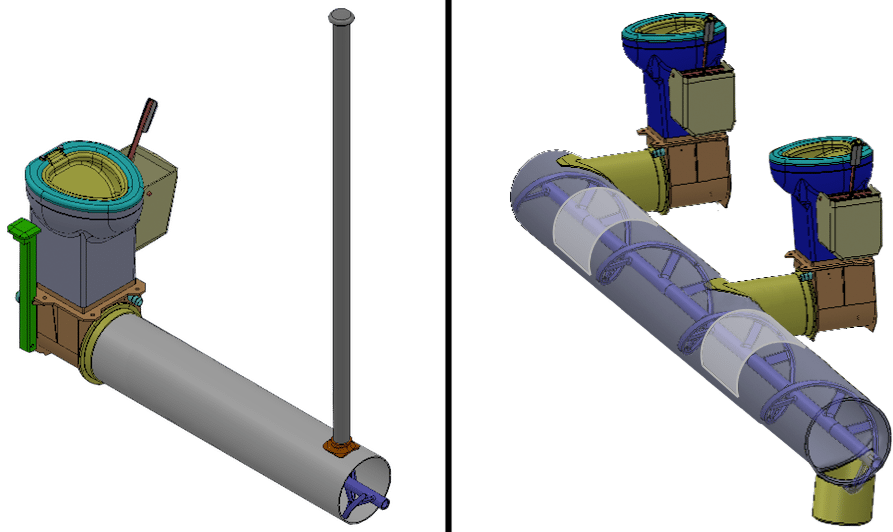
(Left to right) EarthAuger can be a single toilet or a community system. Images courtesy of Chuck Henry at EarthAuger.
EarthAuger is a hybrid of two toilet designs in development now by the US-based Critical Practices, LLC. The system is a urine-diverting dry toilet combined with a composting toilet. It separates urine from solid waste to reduce odor while the solid waste slowly transforms into compost. These toilets treat waste on site and do not require sewage infrastructure or septic tanks. They can be installed as single toilets or in a network of several, as pictured above.
The EarthAuger has been in development since 2001, an effort led by Chuck Henry, a University of Washington professor and head of Critical Practices. The organization has produced 1000 toilets so far and mounted demonstration projects in 12 countries. The design has picked up Phase I and II Grand Challenges grants from the Bill and Melinda Gates Foundation.
Although manufacture has begun, the design is a work in progress, Mr. Henry says.
Critical Practices is developing two related prototypes. One is an “Auger-in-a-Box,” which is a stand-alone eco-toilet that can be set up within one hour.
“I’m building a prototype as we speak, and we’ll showcase it in India in February,” Mr. Henry says.
The other related prototype is a process of pelletizing the compost.
“I’ve even burned it in my pellet stove as well as used it as a soil amendment and fertilizer,” Mr. Henry says.
Critical Practices has a US-based factory that can produce 1000 units per month. The organization plans to establish local manufacture in developing countries when demand is high enough in a region to justify the cost of making injection molds. Demonstration installations in prospective markets will identify design modifications that may be needed to suit the local conditions.
The goal is to develop regional distributors. The first step in each region will be to perform demonstrations to identify local preferences and modifications that may be necessary.
“In 5 years, I’d love to have one or two major distributors/manufacturers in Africa and one in India. Then other regional areas of the world, possibly where demand is less, to have a few distributors that are supplied through our current factory,” Mr. Henry says.
Mr. Henry has detailed pricing according to the number of units purchased. One retails at $300. Discounts for higher quantities may run at $170 each for up to 200, $140 each for more than 200, and $125 each for more than 500. The “Auger in a box” could add $200 to the price, Mr. Henry says.
Awarded Phase I and Phase II
Web site: EarthAuger.org
AlexaPath Auto-Diagnostic Assistant
The Alexapath Auto-Diagnostic Assistant converts a microscope into a mobile-enabled whole slide imaging device. The system links a smartphone to a microscope’s eyepiece and adds a moving slide stage. Alexapath’s Mobile Whole Slide Imaging app and the robotically moving slide stage combine multiple images into a composite of the sample on the slide. With that setup medical workers with minimal training can scan a slide and send it via Wi-Fi or a mobile network to a pathologist anywhere in the world. The system could dramatically decrease the cost and delay of diagnosis of life-threatening illness.
“ADA will save 1 billion lives,” Alexapath’s founder and CEO Lou Auguste recently told the audience at a New York Tech Meetup.
The device is in beta with testing planned for March 1, 2017. Field trials should begin in India in June.
In previous tests, researchers compared the diagnoses that pathologists made from 59 biopsy samples on slides versus Alexapath’s digital images. There was a 95% concordance rate between the two according to results presented at the 2016 United States and Canada Anatomical Pathologists Society’s annual meeting. See the poster.
The goal is to produce 50,000 devices in five years to help more than 120 million people in low- and middle-income countries receive diagnoses, Mr. Auguste says. He plans to sell directly to non-governmental organizations at a cost of $3000 for the hardware. That represents $1 for the cost of each auto-diagnosis. Alexapath also plans to develop training curricula for laboratory technicians to create semi-skilled jobs for people in low- and middle-income countries.
The first disease target will be cervical cancer, one of the most common cancers among women in the regions where Alexapath will be released. It is also one of the easiest cancers to treat when diagnosed early, Mr. Auguste says.
In the next five years, Alexapath plans to develop and market auto-diagnostic artificial intelligence for multiple pathogens including human papiloma virus (HPV), malaria and meningitis that work with the Alexapath Telepathology System.
The device has been awarded an Innovate UK grant and a grant from the United States and India Science and Technology Endowment Fund. It also won an ASME iSHOW award for ‘Best Hardware Led Social Innovation’ in 2015.
Web site: AlexaPath.com
